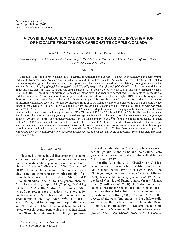摘要
This study is the first to report a detailed geochemical investigation and in situ U-Pb ages for niocalite, which occurs within carbonatite from the Bond Zone area of the Oka Carbonatite Complex (Canada). Niocalite is a Nb-disilicate member of the lavenite-cuspidine group. The major element composition of the niocalite studied here is relatively homogeneous with the average formula of: (Na034Fe0.06Mn0.19Mg0.9Ca13.40REEs is To.oz)zia.(25)Nbz(212)Tao 06(Si2O7)(4)O-7.F-65(2.44). Niocalite is enriched in minor and trace elements [i.e., Ta, Ti, and rare earth elements (REEs) up to 4.35 wt.%], with double- and triple-valenced elements (i.e., Sr, Y, REEs) substituting at different Ca-occupied lattice sites. The chondrite-normalized REE patterns for niocalite are LREE-enriched (similar to 10(4) times chondrite) and negatively sloped. In addition, niocalite has higher HREE contents compared to those for co-existing apatite from the identical carbonatite sample. This result is expected based on bond valence data because of differing cation sizes. in situ U-Pb ages for niocalite from three carbonatite samples obtained by LA-ICP-MS define a wide range of ages, between 111 and similar to 133 Ma. Niocalite from one carbonatite sample yields a bimodal distribution with weighted mean Pb-206/(238)Uw ages of 110.1 +/- 5.0 Ma and 133.2 +/- 110.1 Ma, and overlap those of co-existing apatite for the same sample. Two other samples of carbonatite yield weighted mean Pb-206/U-238 ages of 110.6 +/- 1.2 Ma and 115.0 +/- 1.9 Ma. The geochronological data for niocalite reported here suggests a protracted petrogenetic history for Oka, which corroborates the relatively large range of ages (similar to 20 Myr) previously determined for apatite from the Oka complex. In situ Sr-87/Sr-86 isotope ratios for niocalite obtained by LA-MC-ICP-MS are variable and range between 0.70314 (+/- 7) and 0.70343 (+/- 8). Based on the combined U-Pb ages, major and trace element abundances, and Sr isotope ratios, the history of niocalite formation cannot be attributed to either simple closed-system fractional crystallization or carbonate-silicate liquid immiscibility. Rather, these are consistent with periodic carbonatite melt derivation from a heterogeneous mantle source, and suggest that some of niocalite investigated here represent cognate crystals.
- 出版日期2013-10
